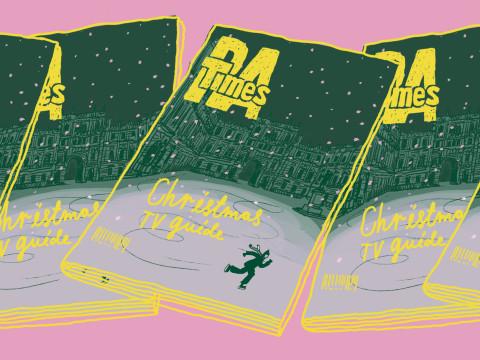
Lubaina Himid's five must-read books by artists
By Lubaina Himid
Published on 25 November 2021
Ahead of her Tate Modern show, Lubaina Himid RA selects artists in print whose words she admires.
From the Winter 2021 issue of RA Magazine, issued quarterly to Friends of the RA.
Lubaina Himid is a painter and curator who has exhibited widely across the UK and internationally. She was awarded the Turner Prize in 2017, made a CBE for services to art in 2018, and was elected as a Royal Academician in 2018.
I’m interested in reading other artists’ writing because they are usually practitioners who wish to be open, sharing either their process or the research which underpins their visual output. Reading what happens ‘behind the scenes’ could be distracting for those who are only passionate about the finished artwork, but I feel if artists themselves offer these insights, we should embrace their texts with enthusiasm.

1. My Mother Laughs, Chantal Akerman (2013)
Described as the simplest and most complicated love story of all, that between a mother and daughter, I found My Mother Laughs (2013), by Chantal Akerman, about the end of her mother’s life, utterly compelling. Even if the avant-garde feminist filmmaker had not died by suicide one year after her mother, this would be an exceptionally tough and tender piece of writing to read. Akerman describes how she prefers getting up early on the day of travel to throw everything into a suitcase without looking. Her mother, on the other hand, liked to be prepared for anything, especially the worst.

2. Laughing Torso, Nina Hamnett (1932)
Laughing Torso (1932) is a memoir by painter Nina Hamnett, a mover-and-shaker in pre-war London and Paris. She loves describing fancy dress parties, shopping trips and life in the studio, where she often drinks and draws simultaneously. We meet extraordinary models and aristocratic collectors, and have encounters with her lovers. She hits us with an account of her burning 15 oil paintings and 200 drawings; she had been brought low by the experience of being awoken and then rescued from a house fire, soon after which she opened an exhibition during a coal strike, only selling one work for seven guineas.

3. Object of a Life, Anne Tallentire (2013)
The practice of Anne Tallentire encompasses moving image, sculpture, performance and photography. In her book Object of a Life (2013), the artist makes what she calls “an inventory of things that come to hand in the course of daily life”. Each spare and delicate text is placed opposite a tiny drawn image, equally exquisite. There is a beautiful 34-word description of the delicious and precise act of installing an object on a wall. There is tension: “only one unit had incurred the instability of a probable collapse”. There is health and safety information concerning polarised plugs. There are many enigmas: “we dare not touch it for fear of leaving a mark”.

4. Teignmouth Electron, Tacita Dean (1999)
Teignmouth Electron (1999), by Tacita Dean, presents a collection of her thoughts, ideas and feelings alongside images she took of the abandoned boat named in the book’s title, famously found adrift without its owner, the yachtsman Donald Crowhurst. You can tell that Dean wants the reader to move alongside her as she attempts to navigate the path between research and personal involvement. At the beginning of one section she explains that “Sailors’ understanding of where they are is dependent on knowing what time it is”. This one sentence tells us so much and is a clue to Dean’s own deep and long-standing relationship with time and the sea.

5. Faux Pas, Amy Sillman (2020)
There are so many layers to Faux Pas (2020), by painter Amy Sillman; it is full of staggeringly useful and often hilarious information written across 17 extraordinarily readable essays. Have you ever considered the weight of colour? The drawings, diagrams and cartoons are messy and awkward, as if thrown onto the page. My favourites are the diagrams illustrating art/literary world dinners. In one called ‘Frustrated People at Dinner’ is the “Drunk curator who keeps shouting questions that make no sense. He is frustrated that no-one answers.” On the same table is “Artist frustrated by both encroaching old age and total obscurity, but remains outwardly cheerful. Wears loud necklace.”
The books I have chosen are of course incredibly different from each other, but all five are immensely generous, occasionally playful and always revealing.

Enjoyed this article?
As well as free entry to all of our exhibitions, Friends of the RA enjoy one of Britain’s most respected art magazines, delivered directly to your door. Why not join the club?
Related articles

Art telly to watch this Christmas
11 December 2024

A love letter to the gallery gift shop
18 November 2024

Painting the town: Florence in 1504
15 November 2024